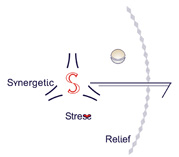

|
|---|
SSR BACKGROUND 1. His Royal Highness the Prince of Wales 2. Health Promotion Clinics Concept 3. Brian Potter 4. Predrag Stankovic 5. SSR Programme Origin 6. Ongoing Reform of the UK’s National Health Service 7. Integrated Healthcare 8. SSR Programme – Innovative Approaches 1. His Royal Highness the Prince of Wales Adverse financial status in the British government-funded health care system by the end of the eighties prompted their leading experts to search for additional ways of improving the health of the nation. What had to be faced in a more comprehensive way included the challenges of rationalising the Service, of improving the health care standards and cost-effectiveness, as well as of giving the patients more space to express their needs and make choices – when it comes to determining the course of their treatment. An important drive to adopt a more holistic approach to health care came from His Royal Highness the Prince of Wales, who was President of the British Medical Association at the time. 2. Health Promotion Clinics Concept One of the results of the above-mentioned endeavours was the Health Promotion Clinics (HPC) concept. It was labelled as one of the best innovations of the General Practitioners’ New Contract introduced in April 1990. The concept itself suggests a shift from treatment of diseases to prevention of illnesses by earlier intervention and health education. GPs are encouraged and financed by NHS to use the services of the complementary medicine (CM) therapists, who are not required to have medical or paramedical background. Most often, the complementary practitioners are engaged in the fields of: stress reduction, cancer support, dietary advice, reduction of tranquillisers, menopause, giving up smoking, and hypertension. Success rate of some complementary therapies exceeds 70 percent and it is manifested as follows: |
|---|
|
|---|